Kyo-Machiya Interior DesignThe interior of a Kyo-Machiya house features unique spaces such as an inner side garden called "tori niwa" and a vaulted ceiling called "hibukuro," and the rooms leading to the back of the house are partitioned with fusuma (sliding doors) and decorated in a way that is appropriate for its use. On special occasions, such as festivities, the sliding doors can be removed to create a large space. Semi-open spaces, such as a open-air veranda called "nure-en," is created between the tatami room and the inner garden, and shoji screens and other fittings are placed in these spaces according to the season. "Tori Niwa" (Innner Side Garden) and "Hibukuro" (Vaulted Ceiling) The inner side garden/corridor leading from the main street to the back garden and its high ceiling. The combination of beams and joineries at the top of the atrium, over which craftsmen competed with each other, is exquisite. Decorating for a Special Occasion On a special occasion, you can entertain your special guests in a large space with the fusuma removed. "Tokonoma" (Alcove) The tatami room has "tokonoma" (alcove) that is decorated for a special occasion. The tokonoma is decorated with hanging scrolls, decorative objects, and flowers to welcome important guests. ”Shoji” (Paper Sliding Doors) An open-air veranda is built between the tatami room and the inner garden, and the shoji screens inside the veranda gently connect the inside and outside, creating a luxurious space that offers the beauty of natural light and shades. "Ranma" (Decorative Transom) "Ranma (decorative transom) between "kamoi" (lintel) and the ceiling is decorated with small shoji screens, "kumiko"(wooden joinery craft), carvings, and and openwork. Fusuma (Japanese Sliding Doors)
Fusuma (sliding doors), which divide each room, are designed with the paper, pulls, and edges appropriate for the use of the room. Kyo-Machiya Floor PlanThe image below shows the "omote-ya-zukuri" style, a relatively large townhouse with separate roofs for the "omote-ya” store area in the front and the main house in the back. Store Area In many Kyo-Machiya houses, the house and the workplace are one and the same, and the store area facing the street is used as a workplace for trading and manufacturing. Entryway At the back of the store are is the entrance to welcome important customers. It is a highly prestigious space. Courtyard The courtyard is a small garden between the main house and the "omote-ya" store area, and it always gives us a sense of nature and helps with ventilation. Kitchen This is a place of living used as a dining room and living room. It is called "daidoko." Tatami Room The tatami room facing the back garden is the place where the master receives important guests. The ”tokonoma” (alcove) is decorated according to the season to welcome guests. "Hibukuro” The upper part of the inner garden is vaulted to help clear away smoke and fire debris from cooking. The beams and other woodwork are beautifully arranged, and ceiling windows and high windows are installed for lighting. "Tori Niwa" Side Garden A general term for a long, narrow dirt floor that leads from the front to the back. The front part is called "mise niwa" (store or display garden) and the back part is called "hashiri niwa" (running garden). Back garden
For a Kyo-Machiya house with narrow frontage, the back garden is a valued space that allows you to come in contact with nature, provides light and ventilation, and helps prevent the spread of fire. Exploring Kyo-Machiya, the Eel's BedKyo-Machiya houses have a depth that cannot be imagined from their narrow frontage. It is filled with wisdom and ingenuity to distinguish between "hare and ke," public and private, and to be in touch with nature, which allows the residents to live in harmony with people around them and nature. Kyo-Machiya Floor PlanThe basic layout of a Kyo-Machiya is based on the rule of contiguity with the neighboring buildings and gardens, and connects the work area, the kitchen, and the tatami room, where guests are welcomed, with a "passage garden" leading from the front street to the garden in the back. Although there are some variations in this floor plan depending on the scale of the building, it is roughly the same. Variations in floor plans The floor plan of a Kyo-Machiya can be categorized according to the arrangement of the rooms, such as three rooms in a row, four rooms in a row, four rooms in two rows, and six rooms in two rows. In the Nishijin district in Kyoto, there is a row of weavers' machiya houses, which have an earthen floor with a vaulted ceiling at the back of the house as a work space for looms. Cross-sectional view of the weaver's house
Types of Kyo-Machiya Houses
Full Two-Story House ( two main floors) The ceiling height of the second floor is about the same as that of the first floor. This style was established in the late Meiji(1868-1912) and Taisho periods (1912-1926). "Tsushi" Two-Story House The ceiling of the second floor is lower than that of the first floor, and the second floor often features a "mushiko" (insect-cage) window. This style was established in the mid-modern era in the 19th century and was commonly used until the late Meiji era(1868-1912). One-Story House A one-story house with the characteristics of a Kyo-Machiya. "Shimotaya" A Kyo-Machiya house originally built as a private residence without a store in the front. The opening of the front window (the "dekoshi" latticed bay window) is smaller. Large Wall Structure A walled Kyo-Machiya house built as a residence exclusively for a wealthy merchant family. There is a high wall on the street side. Signboard Structure
The front side of a Kyo-Machiya is completely altered to make it look like a modern building. It is relatively easy to restore the original appearance. 1/7/2021 Procedures based on the Kyoto City Guidelines for the Construction of Inns and Other Facilities (in the case of a plan involving an application for a building permit)Read Now Procedures for Application for a License to Operate a Ryokan (Guesthouse/Airbnb) Business [November 10, 2020]Step 1. Procedures based on the Kyoto City Guidelines for the Construction of Inns and Other Facilities (in the case of a plan involving an application for a building permit) 1)Public Disclosure of Plans [Installation of Signs] - Installation of signs describing the outline of the plan at easily visible locations within the site [Form available]. - After the installation of the sign, immediately report the following to the medical hygiene center. (i) The date of installation of the sign, (ii) The place where the sign was installed, (iii) A floor plan of an area approximately 200 meters around the place where the sign was installed, (iv) Photographs showing the place where the sign was installed and its surrounding conditions, and (v) Photographs that enable the description of the sign to be easily read. - The period of installation of the sign shall be from 20 days prior to the application for approval by the mayor until the issuance of the certificate of confirmation of the application for building permit. [Explanation to Neighbors, etc.] - The outline of the plan shall be explained to neighboring residents, etc., and if deemed necessary, a briefing session shall be held. In addition, measures such as holding briefing sessions shall be taken when deemed necessary. - The scope of the explanation area is as shown in the figure below (★) [Scope of neighborhood explanation]. After 20 Days 2) Application for Approval of the Plan ●Attached Documents Outline of the structural facilities, report on the results of public disclosure, photographs of the situation in which the sign is installed, floor plans of the vicinity, layout plans, floor plans, documents showing the floor area, bedroom area, and window area of the guest room, and the basis for their calculation in tables, etc., detailed drawings (front view, side view, etc.) of the entrance reception , etc., elevation drawings, documents clearly indicating interior finishes, floor plans of the area where the outdoor advertisement is to be installed, drawings clearly indicating the design and form of the outdoor advertisement, and other documents deemed necessary by the mayor. 3) Issuance of Notice of Plan Approval Step 2. Procedures based on the Building Standards Law1) Building Permit Application 2) Issuance of Confirmation Certificate *In case of change of use, Attach Step 6 3) Construction 4) Issuance of Certificate of Inspection *In case of new construction, extension, etc., Attach Step 6 Step 3. Procedures based on Fire Laws and Regulations1) Application for Issuance of a Notice of Compliance with Fire Regulations 2) Issuance of Notice of Compliance with Fire Regulations Procedures based on the Ryokan(Guesthouse/Airbnb) Business LawStep 4 Opinion inquiry to schools, etc. (*)Within a 110-meter area from the site of the facility to be inquired aboutTarget facilities for opinion inquiries Schools, child welfare facilities, social education facilities (community centers, libraries, museums, city parks, etc.) 1) Submit documents related to the opinion inquiry 2) Kyoto City inquires about opinions of schools, etc. and receives responses Step 5 Procedures based on the Kyoto City Ordinance on Enforcement of the Law Concerning Inns and Hotels and Measures to Ensure the Proper Operation of Inns1) Installation of signs and reporting on the status of installation of signs [Installation of Signs] - Installation of signs describing the outline of the plan at easily visible locations within the site [Form available]. - Installed from 20 days prior to the date of application for a business license for an inn business. [Reported Items] - After the installation of the sign, immediately report the following to the medical hygiene center. (i) The date of installation of the sign, (ii) The place where the sign was installed, (iii) A floor plan of an area approximately 200 meters around the place where the sign was installed, (iv) Photographs showing the place where the sign was installed and its surrounding conditions, and (v) Photographs that enable the description of the sign to be easily read. 2) Explanation to neighboring residents [To be conducted at the same time as (1)]. [Scope of neighborhood explanation] As shown in the figure below (★) . [Description] / Description of the Sign Location of the facility, name, address, and contact information of the applicant, expected date of application, and name of the facility Size and structure of the building, area of the facility, number of guest rooms, capacity of guests, expected date of commencement of business Name, address, and contact information of the administrator, information on briefing sessions, and contact information of the person who will respond to inquiries about the sign Contact information of the person who will respond to inquiries about the contents of the explanation Specific details to be explained to guests (house rules) ●If there is a request from the residents of the surrounding area, local community associations, etc., to hold an explanatory meeting or to provide individual explanations, etc., the company shall respond sincerely. (*) [Scope of neighborhood explanation] Planned application site ----- Within 10m of the site of the facility to be applied for ----- 20 m from the exterior wall of the building where the facility to be applied for is located The description covers building numbers 1 through 7. The site of building number 8 is within 10 m of the site of the proposed facility, but is not covered because the exterior walls, etc. of the building of building number 8 are not within 20 m of the exterior walls, etc. of the building of the proposed facility. 3) Preparation of Reports and Documents for Permit Applications [Contents of report] ●Status of Signage Period of installation of the sign, location of the sign, photograph showing the status of installation, legible photograph of the contents of the sign, whether there has been any change in the location of the sign, and if there has been any change in the location of the sign, the new location ●Status of Explanation to Residents Books showing the location of buildings existing on the site within 10 m of the site, information necessary to identify the location of buildings occupied by the other party to the explanation, date and time of the explanation, location of the explanation, method of the explanation, opinions from the other party and the status of response ●Waste Disposal Methods If the applicant is transporting the waste to a waste treatment facility by himself/herself, a statement to that effect; if the applicant is entrusting the collection and transportation of the waste, the name of the licensed collection and transportation company ●Other If the business operator is an individual who does not have a domicile in Japan or is a foreign corporation, the name, address, and contact information of the appointed agent, documents certifying the agent's authority of representation, documents confirming the width of the narrowest part of the evacuation passage (Documents that can confirm the width of the narrowest part of the evacuation corridor), documents that can confirm the owner of the facility, the rules stipulated in the provisions of the Unit Ownership Law, and a letter of approval from the unit owner. Attach Step 6 Step 6 Application for a Business License for the Inn (Guesthouse/Airbnb) Business1) Application for a Business License for the Inn (Guesthouse/Airbnb) Business ●Attached Documents - Drawings that clearly show the structure and facilities of the business facility. - If the applicant is a corporation, a copy of its articles of incorporation or articles of endowment and a certificate of registered matters of the corporation; if the applicant is an individual, a copy of the certificate of residence and other books deemed necessary by the mayor. - Application fee: 52,800 yen (Application fee is non-refundable) 2) Site Survey 3)Issuance of Business License 4) Start of business (Matters to Be Observed in the Proper Operation of Inns by Business Operators)
●The number and identity of guests shall be confirmed by interview at the entrance hall. ●During the interview at the entrance hall, the necessary matters to prevent the deterioration of the living environment of the surrounding residents and the use of the facilities shall be explained. (If necessary, foreign languages shall be used.) ●A system shall be established to respond appropriately and promptly to emergency situations such as complaints and inquiries from nearby residents. ●A sign stating the following items shall be installed in a location easily visible from outside the facility [Inns and Hotels/Guesthouse] Name of the operator (or name in the case of a corporation) Name of the facility Type of business Contact information for the manager Location of the outside reception counter to the facility (if an outside reception counter of the facility is to be provided) [Outside Reception Counter] As it is an outside reception counter of the facility Name of the facility to be managed Housing Loan for Kyo-Machiya House "Nokosou Kyo-MachiyaThe interest rate of the mortgage loan is 1.8% lower than the standard interest rate of the mortgage loan (variable or fixed) for "Nokosou Kyo-Machiya". *京町家専用住宅ローン「のこそう京町家」については、住宅ローン標準金利(変動又は固定)より年率1.8%低いご融資利率となります。 The "ECO Preferential Service" cannot be used in conjunction with the "Nokosou Kyo-Machiya" mortgage. *京町家専用住宅ローン「のこそう京町家」と「ECO優遇サービス」の併用は出来ません。 Purpose for Loan UseFunds for the purchase and renovation of a machiya (traditional Japanese townhouse) in which the applicant will live. *In principle, the applicant is required to submit the "Kyomachiya Chart" issued by the Kyoto City Center for Landscape and Urban Development (If the applicant has not obtained the "Kyomachiya Chart", the applicant is required to submit the "Kyomachiya Profile"). *We will check the original copy of the "Kyomachiya Chart" and "Kyomachiya Profile" and ask you to submit a copy. ご本人がお住まいになる「京町家」の購入資金および改修資金 ※ 原則、「公益財団法人 京都市景観・まちづくりセンター」が発行する「京町家カルテ」のご提出が必要となります(「京町家カルテ」を取得されていない場合は、「京町家プロフィール」をご提出いただきます)。 ※ 「京町家カルテ」、「京町家プロフィール」は原本を確認させていただき、コピーをご提出いただきます。 Funds for the construction and purchase of a new "Heisei no Kyo-Machiya" (Kyoto machiya) to be lived in by the applicant. *The original copy of the "Heisei no Kyo-Machiya Certification Notice" will be checked and a copy will be required. (The original copy of the "Heisei no Kyo-Machiya Certification Notice" will be checked and a copy will be submitted.) ご本人がお住まいになる「平成の京町家」の新築資金および購入資金 ※ 京都市が交付する「平成の京町家認定通知書」の提出が必要となります。 (「平成の京町家認定通知書」の原本を確認させていただき、コピーをご提出いただきます。) Who Can Use This Loan? ご利用いただける方-Those who live or work in the Bank's business area. -Between the ages of 25 and 65 at the time of application, and under the age of 80 at the time of final repayment. -Those who can expect stable income. -Those who can receive a guarantee from a guarantee company designated by the Bank -Those who can take out the group credit life insurance specified by the Bank. -Those who meet the loan criteria specified by the Bank 当金庫の営業地域内に居住又は勤務されている方 申込時の年齢が満25歳以上満65歳未満の方で、最終ご返済時の年齢が満80歳未満の方 安定した収入の見込まれる方 当金庫の指定する保証会社の保証を受けられる方 当金庫の指定する団体信用生命保険に加入できる方 当金庫の定める融資基準を満たしておられる方 Loan Summary Description (PDF: 290KB) *in Japanese
Can't borrow even if you have the income and ability to repay the loan? 4 Patterns that prevent you from getting a mortgage on an existing home purchaseRising land prices and building costs have caused the price of new properties to rise. As a result, used homes are attracting attention. Renovation properties", which renovated used homes to be more stylish and functional than new homes, have become popular, and the number of people considering the purchase of used homes is increasing. Incidentally, renovation is a type of reform, which means to renovate an existing home to have better performance than when it was new. Nowadays, there are mortgage loans that can be borrowed together with the cost of renovation, so if you are thinking of buying and renovating an existing house, if you do the renovation at the same time of purchase, you can borrow a mortgage to combine the cost of purchase and renovation of the house. Many people know that in order to take out a mortgage loan, you need to have a certain income and the ability to repay the loan. But did you know that there are cases where you can't get a mortgage even if you have the income and the ability to repay the loan? That's what we call an "Existing Home with No Mortgage Available". Why can't I get a mortgage?When financial institutions provide mortgage loans, they screen the "person" and "property". The "person" screening is based on the applicant's income, place of employment, and whether or not he or she has any other loans, and whether or not he or she will be able to repay the mortgage without delay. On the other hand, the screening for "property" is based on whether the property is worth lending money to. Mortgages are lent against the property (land or building) that the loan recipient is purchasing. Simply put, if the borrower is unable to repay the loan, the financial institution will sell the property and use the proceeds to repay the loan. However, in some cases, financial institutions do not recognize the value of the collateral and will not lend the mortgage even if the loan applicant's ability to repay the loan. A "financial institution does not recognize the value of the collateral" means that even if you try to sell it, a buyer cannot be found, or even if you can sell it, it was judged that you cannot collect the loan. If you consider a house to be an asset, you should not buy a property that you cannot get a mortgage loan for. So, what kind of property is such a mortgage loan not available? <Case 1> Leasehold houses and houses with fixed term leasesA leasehold is simply "the right to rent someone else's land and build your own building on that land". A fixed term land lease is a tenancy for a fixed period of time (generally 50 years or more), and the principle is that after the term expires, the building is demolished and the land is cleared and returned to the owner. Although it is necessary to pay the deposit and the monthly ground rent at the time of a contract, since the land rent is not included, it seems to be a case where it can be purchased at about 40-50% of a general house. However, it can be difficult to get a mortgage loan because the ownership of the land does not belong to the person who bought it and financial institutions cannot use the land as collateral. Some financial institutions make it clear that they will not handle leasehold or fixed-term leasehold homes. However, it is common for new condominiums for sale to have an affiliated loan, so you can get a mortgage. <Case 2> Housing built in an urbanization control areaThe house can be built in the area that corresponds to the "urbanization area" defined by the city planning law. Although "the urbanization control area" has a name similar to this, it is the area where urbanization must be controlled, that is, urbanization must be suppressed, and a general house cannot be built in principle. In fact, some people have built their houses and are living in them even before they were set up in the urbanization control area. The house built in those urbanization control areas can be purchased, but the borrowing of the mortgage becomes difficult. In addition, the relief measure "the existing housing site" which permits building exceptionally, such as the person who lived before it is set up in an urbanization control area, also exists. <Case 3> Reserved land for land readjustment projectsLand readjustment projects are "projects to improve public facilities such as roads, parks and rivers, and to demarcate land in order to improve the use of residential land. In some cases, land owners have to bear the costs of land readjustment projects, but in such cases, the land owners do not bear the costs in monetary terms, but rather the land owners within the area gradually pool their land to establish a reservation, which is then disposed of and used to cover the project costs. Some financial institutions do not offer mortgages for the purchase of this reservation land for the land rezoning project. However, some financial institutions do sell "reservation loans" specifically for reservation land, so please consult with your financial institution on an individual basis. <Case 4> Property that cannot be reconstructedA property that is designated as non-reconstructable cannot be "rebuilt". There are several reasons for being designated as non-reconstructable, but the most common is a case of violating the "duty of access". So, what is the duty of accessibility? The Building Standards Act basically dictates that the land on which a construction site is to be built must abut a road that is at least 4 meters wide and at least 2 meters long. When this regulation is established, the building that has already been built cannot be demolished because "it is in violation", so the building remains as it is, but "rebuilding" is not allowed, which is a property that cannot be rebuilt. If the streets are narrow, the possibility of the fire spreading increases, so it is also meant to strengthen the fire prevention system. In some old streets, buildings are crowded at both ends of narrow streets, or houses are built in alleys and corridors from the street. The above are the main, when buying real estate, the mortgage is not available, and even if it is available, the collateral valuation is low.
When buying the real estate which exists in these cases, there are cases where the method of payment is limited to cash. Let's confirm whether it does not fall under the above beforehand, and try to make a smooth transaction. 8/20/2020 the Inns and Hotels Act, the National Strategic Special Zones Act, and the Private Lodging Business ActRead Now What is "Private Lodging"?Following yesterday, we will explain about Private Lodging in Japan. Below is a comparison table, so please check what is different according to each act. Although "Private Lodging" is not defined clearly in the laws and regulations, it refers to the provision of accommodation service to travelers and other users by utilizing all or part of housing (condominiums, including detached housing and apartments) is generally called "Private Lodging." In recent years, there has been a rapid development of businesses matching those who want to lend a vacant room for a short period via the Internet with those who hope to find accommodation. Expectations for Private Lodging are also rising in Japan as well, from the viewpoint of community activation, such as responding to the various lodging needs of the rapidly increasing numbers of international visitors to Japan, and effectively utilizing the increasing number of vacant houses due to an aging society with fewer children. On the other hand, since there are people conducting Private Lodging without approval, though they fall under the hotel business that requires approval under the Inns and Hotels Act, it is necessary to handle these situations by setting rules, giving consideration to the securement of public health, such as to prevent the spread of infectious diseases, and to prevent trouble with community residents. Based on these issues, the Private Lodging Business Act (Act No. 65 of 2017) has become effective in June 2017 for disseminating proper Private Lodging services under certain rules. Starting with the enforcement of the Private Lodging Business Act from June 2018, those who conduct Private Lodging in Japan need to select a method from the following. 1.Obtain permission in respect to the Inns and Hotels Act (Act No. 138 of 1948) 2.Obtain authorization in respect to the National Strategic Special Zones Act (Act No. 107 of 2013) (Special Zone Private Lodging) 3.Register in respect to the Private Lodging Business Act Comparison of the overview on these systems is as follows.
Inns and Hotels ActThe Inns and Hotels Act is a law set forth for the purpose of contributing to improve public health and people's lives through promoting the provision of services that cope with enhancement and diversification of the user's demands in the hotel business field, while planning to develop sound hotel businesses by securing appropriate operation in the hotel business. The Hotel Business is defined as "a business that lodges a person for a fee" and "lodging" is stipulated as "to use a facility by using bedding" in this law. In order to operate this hotel business, it is stipulated that obtaining permission in accordance with the Inns and Hotels Act is required. In addition,the hotel business differs from the room renting business, including apartments, concerning the following points. (1) Responsibility on maintaining and managing the cleanliness of the facility, including the rooms for lodgers, is universally accepted to be on the operator, considering from point of facility management and operation form in general, and (2) the room of the facility that the lodger uses is not the principal place of residence for that person. Even if housing are used for lodging, obtaining permission in accordance with the Inns and Hotels Act is required, since conducting a "Private Lodging Business" that provides lodging repeatedly for a fee basically falls under the hotel business. There are several types of permission in accordance with the Inns and Hotels Act, however, obtaining permission for operating simple lodging is common if conducting a private lodging business without registration. (Hotel Business Classification) 1. Hotel Operation (*) Operation, where a facility mainly consisting of western style structure and equipment is established, and accommodates it to a person for a fee. 2. Inn Operation (*) Operation, where a facility mainly consisting of Japanese style structure and equipment is established, and accommodates it to a person for a fee. 3. Common Lodging House Operation Operation, where a facility consisting of structure and equipment is established for several persons to share, and accommodates it to a person for a fee. (pension, youth hotel, etc.) 4. Boarding House Operation Operation, where a facility is established, and accommodates it to a person for a fee on a monthly basis. (*) Hotel operation and inn operation will be integrated as "inn and hotel operation" from June 15, 2018 as "operation, where a facility is established, and accommodates it to a person for a fee excluding simple lodging operation and boarding house operation". The structure equipment of the facility to be used needs to meet the standard upon obtaining permission. In addition, application to the prefectural (including the city that establishes a health center and special zone) health center, where the facility (housing) expected to conduct the Private Lodging service is located, is required. Permission standard for simple lodging (standard on minimum floor area) was relieved in April, 2016 and obtaining its permission has become easier than before. Cases Not Applicable to the Inns and Hotels ActThere are some cases that do not apply to the Inns and Hotels Act, even if they are providing lodging services using housing. Some examples are as follows.
■In case of providing one's house in accordance with a local government's request when an event is held (Government Notification in July 2015) ⇒ To solve the shortage of lodging facilities in an area, when lodging facilities run short for an event that is expected to attract many customers, event-private-lodging enables travelers to stay in facilities which are originally not lodging facilities. The event-private-lodging is expected to be effective from the viewpoint of local creation through tourism, as it leads to promoting interaction between the people of the area and travelers, as well as expanding tourism consumption in the area. ■Short-term residence to vacant house properties with the purpose of buying and selling or leasing to a person wishing to move (Government Notification in March 2016) The Inns and Hotels Act will not apply to a short-term residence to a vacant house property from the assumption that it will be bought, sold or leased to a person wishing to move, if all of the following measures are taken. (1) The activity of using and utilizing the vacant property is placed in accordance with the Act on Special Measures on Promoting Countermeasures on Vacant Houses, etc. (Act No. 127 of 2014), and the subject of the facility is specified in a local public entity, such as when the local public entity that is to conduct such activity has registered the vacant property. (2) A person who is to purchase or lease the subject of the facility can be confirmed by the local public entity that such person truly has the will to purchase or lease such facility for long term. (3) It can be confirmed that the actual condition of the facility is secured from many and unspecified persons using it repeatedly and continuously, through taking the measures written in (1) and (2). ■In cases where a regional council and other entities commissioned from a local public entity does not receive value equivalent to the lodging fee from the lodger, but only receives value equivalent to counseling related to such hands-on experience (Government Notification in March 2016) In a case where a regional council or other entities commissioned from a local public entity does not receive value equivalent to lodging fee from the lodger, but only receives value equivalent to guidance related to hands-on experiences, expenses paid by a regional council or other entities to farmers and other persons that provide hands-on experience services for educational trips that are accompanied by hands-on experiences does not come under the Inns and Hotels Act, as such fees do not apply to lodging fees. Please contact your nearest health center to ask whether any matter comes under the Inns and Hotels Act. https://www.mlit.go.jp/kankocho/minpaku/overview/minpaku/law2_en.html Business starts on Monday after ObonMany companies are starting operations today. Depending on the real estate company, some companies are open from 16th, and some are closed until 19th, but we are restarting from today. Since REINS, which shares information among traders, will be stopped online from 14th to 17th, new registration and renewal work will be possible tomorrow. We use this system to obtain and confirm information that our company does not have, so we will confirm the property from tomorrow morning and will contact the customers who are waiting for us. It is customary to go home during the Obon season, but the news shows that the Shinkansen occupancy rate was low across the board. It is famous every year such as U-turn rush, and it was crowded everywhere, but it seems that there were very few people coming and going this year. Two weeks after the Obon season, the end of August, how much more people will be infected with coronavirus at this time is likely to be the point later this year. The new school year will resume in one week at the earliest schools, so it seems that it is necessary to pay attention to the trends over the next 1-2 weeks. I work in Kyoto, but I live in Shiga Prefecture. In the summer, we can enjoy swimming and camping at Lake Biwa, as well as BBQs in the mountains and rivers. There is plenty of nature to spend time with the children, and it is a very nice environment. Right now, there are restrictions on movement, but next time you're in Kyoto, we hope you'll stop by Shiga Prefecture as well.
|
Details
AuthorArrows International Realty Corp. Archives
June 2023
Categories
All
|
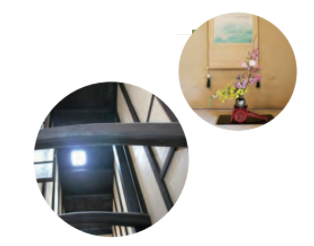
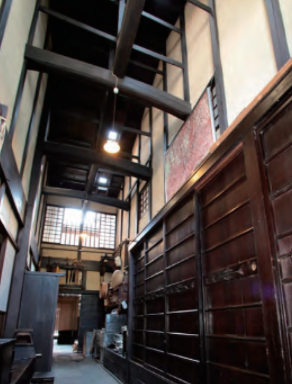
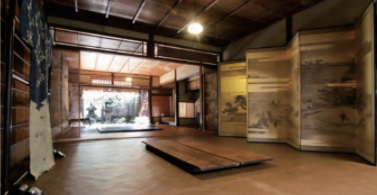
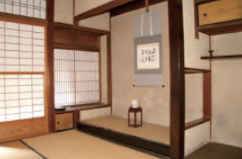
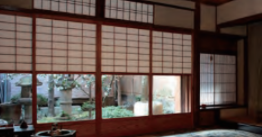
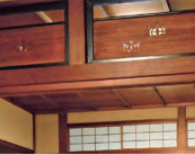
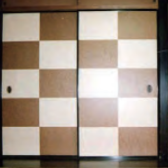
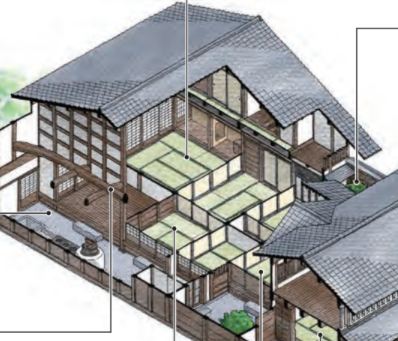
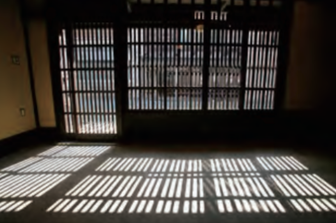
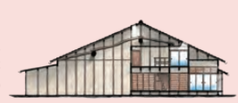
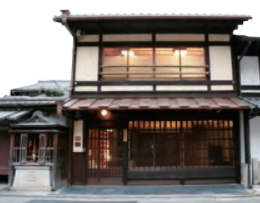

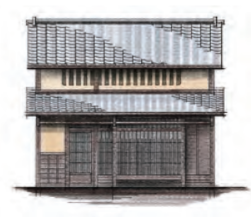
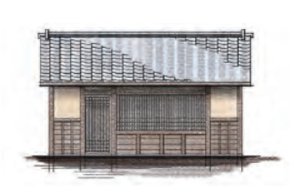

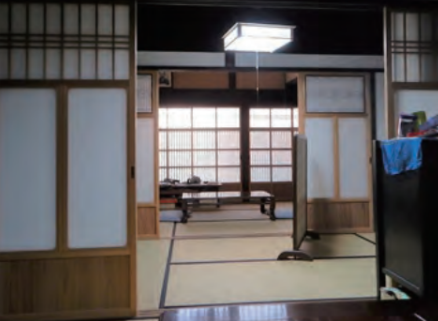
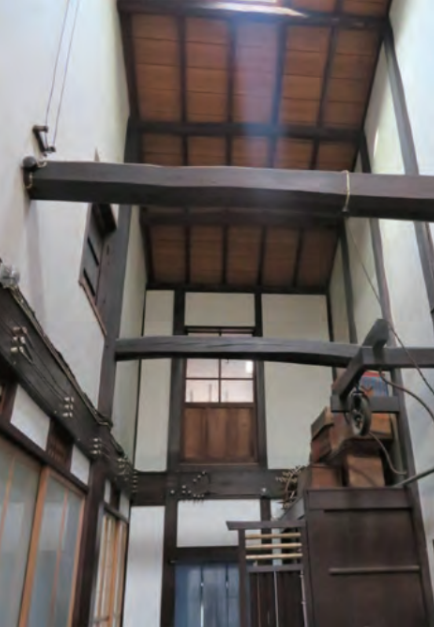
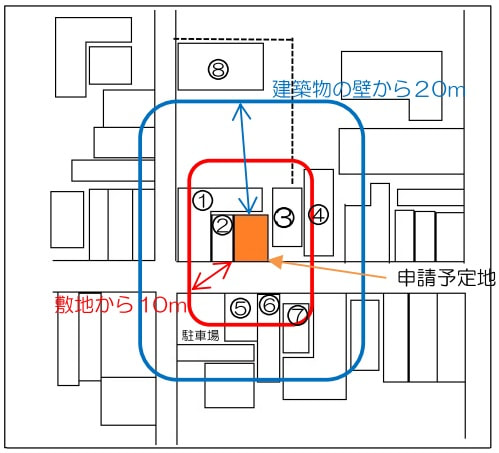
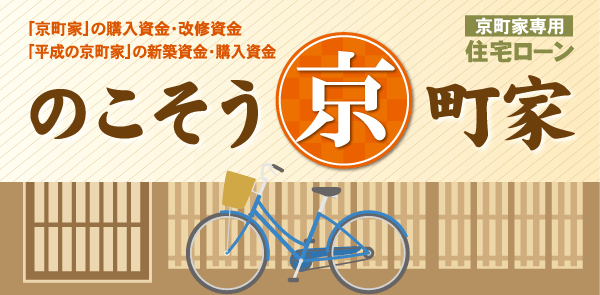

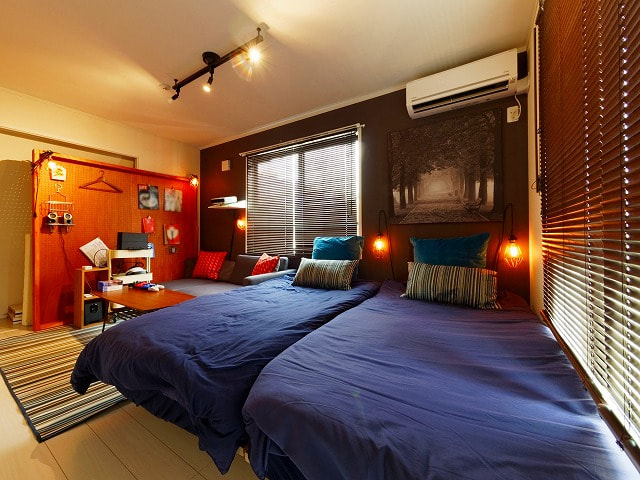
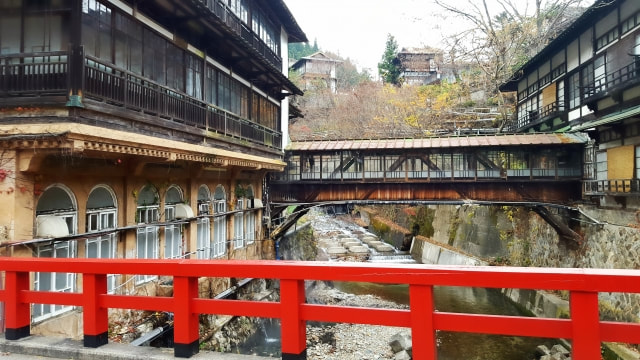

 RSS Feed
RSS Feed